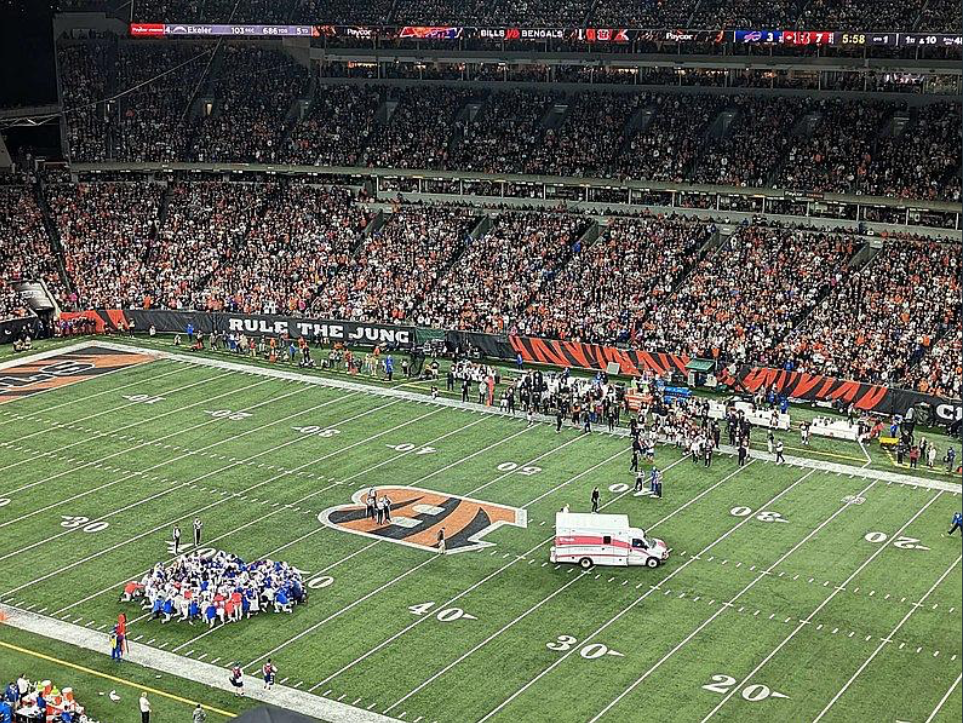
On Sunday night, 113.1 million people tuned in to watch the Kansas City Chiefs take down the Philadelphia Eagles in Super Bowl LVII making it the third most-watched program in US television history, sitting behind the two previous Super Bowls. American football is clearly premier entertainment. Unfortunately, the sport itself has the potential to be very dangerous. Just over a month ago, Damar Hamlin found this out the hard way.
Hamlin is a safety for the National Football League’s Buffalo Bills. During a primetime Monday Night Football game against the Cincinnati Bengals, arguably the biggest game of the entire regular season, Hamlin took a hit to the chest while tackling Bengals wide receiver Tee Higgins. After completing the tackle, Hamlin stood up for a moment before fainting to the ground. For the next 19 minutes, athletic trainers and medical staff administered CPR; he had suffered a cardiac arrest. Just under 45 hours after the year began, Hamlin’s new year had turned into a total nightmare.

The game would be suspended and later canceled by the NFL as players on both sides were emotionally shocked. At that point, nobody wanted to play a football game. The life of a teammate and friend was on the line. The story quickly broke national headlines across the country and was trending on Twitter. All teams changed their social media profile picture to a Bills #3 with ‘Pray for Damar’ underneath. Fans and spectators showed their support for Hamlin by donating to a GoFundMe he runs for a hometown winter toy drive. The donation total was under the $2,500 goal before the game started. At 12:30 pm the next day, just about 16 hours after the incident, the fundraiser had reached just over $4 million. 8 days later, the total was at $8,700,000.
On January 9th, just one week after his terrifying collapse, Hamlin was released from the University of Cincinnati Medical Center and returned home to Buffalo. The initial belief by many experts in the field is that Hamlin suffered commotio cordis, which is sudden arrhythmic death following a blow to the precordial region that lies right over the heart during a short, specific time in the heartbeat cycle. From 2006 to 2012, this condition had a survival rate of just 58% [i]. Luckily, the prayers were answered and Hamlin’s life was saved.
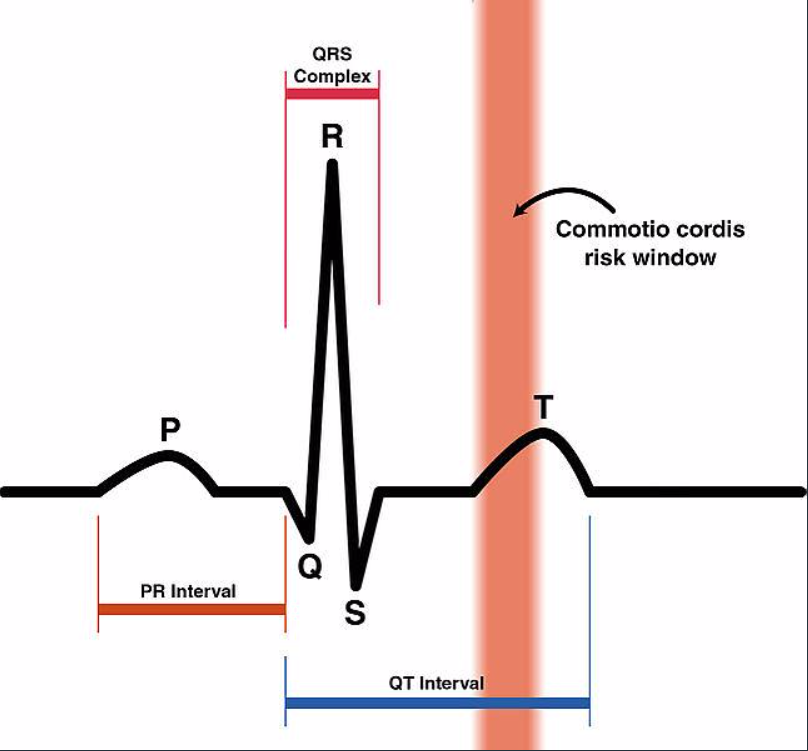
The injury to Hamlin is not the only serious injury to strike this season. Tua Tagovailoa, the young starting quarterback of the Miami Dolphins, suffered his second recorded concussion of the season in Week 16. Concussions have been an issue in gridiron football since its origins in the 19th century, but the NFL has done significant work over the past few decades to curb the problem. However, the life-damaging injury that can lead to chronic traumatic encephalopathy, or CTE, still haunts the league.
In the third week of the season, Tagovailoa hit his head after being hit on a sack against the Bills. He was tested for a concussion but the Dolphins staff found him to be negative, later catching slack for the decision because of the quarterback’s obvious concussion-like stumbling when he stood up after the play. The next week came around quickly with the Dolphins playing in Cincinnati. On a violent sack, Tagovailoa was slammed to the turf and landed unconscious. He was finally diagnosed with a concussion after being hospitalized and ruled out for a few weeks.
If that wasn’t scary enough, he hit his head hard off the ground again in Week 16 against the Green Bay Packers. Concussion spotters did not see the hit, and he remained in the game. The prolific stat line that Tagovailoa had before the hit came to an abrupt halt as he threw three interceptions during the rest of the game. It was obvious that he had a concussion the next day when he could not remember many plays during the contest. This was his second diagnosed concussion during the season, leaving him out heading into the first round of the postseason. Some even think that the young star should consider retirement.
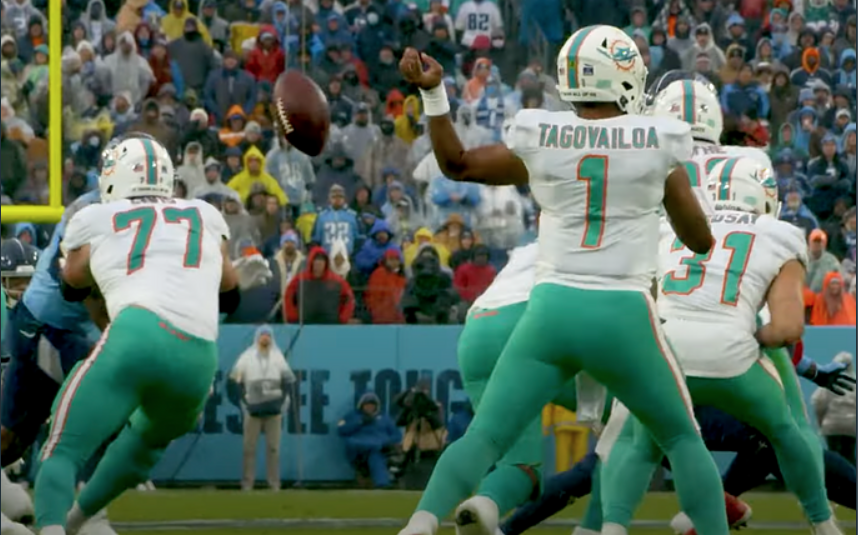
With both stories breaking national headlines, parents of football players around the nation are seeing the real dangers of football first-hand. This obviously brings the safety of football into consideration. Should these parents allow their young kids to play tackle football?
If anyone can answer that question, it is Malden High School football’s head coach Witche Exilhomme. As a former player himself, Coach Exilhomme is well aware of the dangers of the game. However, as a coach, he must rely on the parents to allow their kids to play.
Should parents allow their young kids to play football? Coach Exilhomme thinks so. “There’s not a thing in life that doesn’t present any danger,” he mentioned. “Kids get hurt driving all of the time. A kid can play soccer and get hurt. A kid can play baseball and get hurt. A kid can play hockey and get hurt.” He is not wrong about any of this. People get hurt in other sports frequently, especially soccer, which has one of the highest concussion rates in youth sports, and motor vehicle accidents are the most common cause of death for teens in the United States. “If they want to pull their kids out of football, it is a safe bet. But, at some point, they are going to have to let the kid go out there and chase their dreams.”
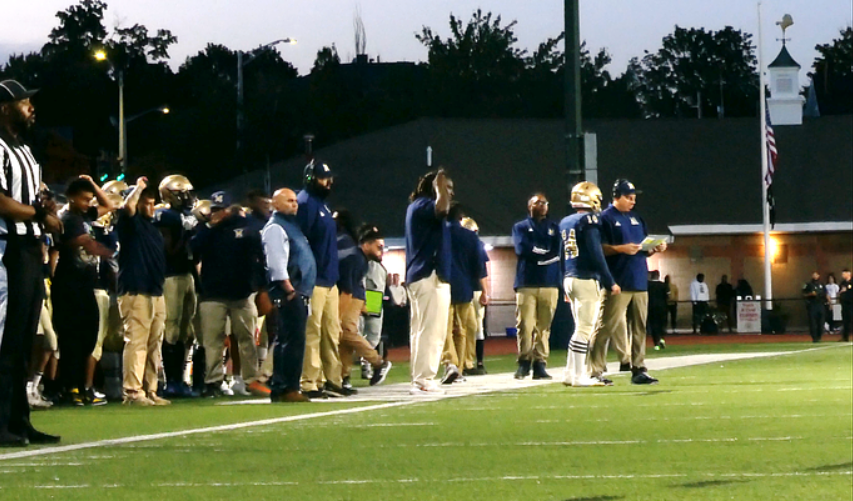
‘Practice makes perfect’ applies to plenty of activities, and football is definitely one of them. A kid that has practiced and played football since the age of four is likely to be far better than someone who began in high school. The problem with this, however, is that young kids taking hits to the head throughout their childhood development is a recipe for health issues down the line.
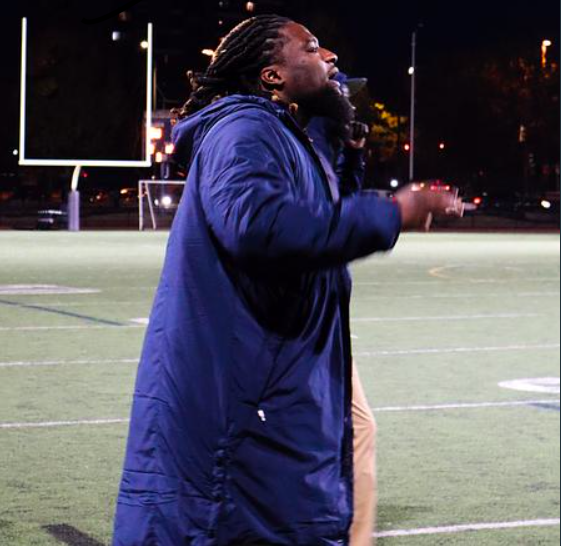
Coach Exilhomme believes that this needs to be investigated. “I honestly think that we should look into the age where kids start playing the game.” He first began his playing days at the age of 13. “I think that I got into the game at a good time. It’s better than having four or five-year-old kids running around and hitting their heads when they are so susceptible to brain injuries and bone injuries that affect their future.” The coach supports other options like flag football for younger kids so that they can sharpen their skills while protecting their heads.
Aidan Brett, sophomore quarterback, drowns out any of those thoughts. “I don’t even think about getting hurt. I just go out there and play.” Many players likely share this philosophy as it allows them to play fearlessly. However, Exilhomme was always aware of the danger. “I always knew what could happen to me. But, being one of nine kids from an immigrant family, football was one of those options for me to be successful, go to college, and make something of myself.”
It seems that the injuries at the professional level have slightly affected Malden’s football environment. With Exilhomme mentioning that “numbers are down” and that the “majority of academically talented kids are not progressing” in football, the fear of bodily harm has made a clear impact on the students who choose whether or not to play.
Every player certainly has their own story. They all have different motivations to play the game and face different challenges during that process. Regardless, every player that suits up on the gridiron steps right into the path of injury. While most players manage to avoid them, some lives are ruined by the football injury bug. Still, American football remains the most-watched professional sport in the nation by a wide margin. Although numbers are slightly down at the high school, American youth are constantly exposed to the competitive fun of the game. With the glorious life of a millionaire athlete at the end of the tunnel, the football dream will continue to thrive.
[I] Maron, Barry J, et al. “Increasing Survival Rate from Commotio Cordis.” Heart Rhythm Journal, Heart Rhythm Society, 29 Oct. 2012, https://doi.org/10.1016/j.hrthm.2012.10.034.



